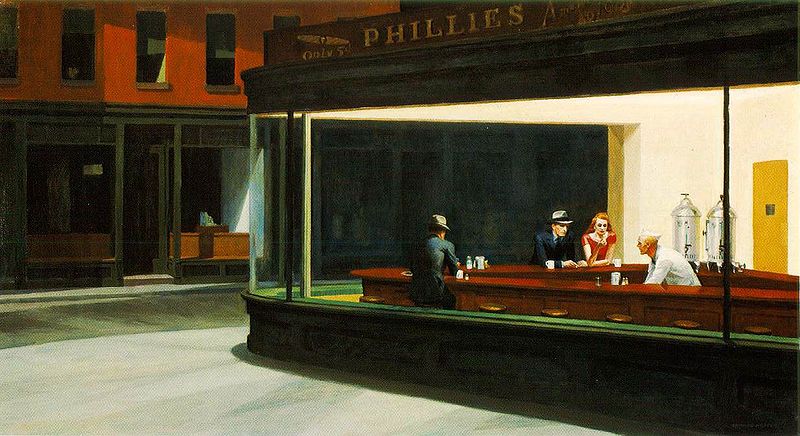From an Op-Ed in Monday’s New York Times about a frustrated search for the existence of the “real” Nighthawks diner painted by Hopper:
Over the past years, I’ve watched bakeries, luncheonettes, cobbler shops and much more come tumbling down at an alarming rate, making space for condos and office towers. Now the discovery that the “Nighthawks” diner never existed, except as a collage inside Hopper’s imagination, feels like yet another terrible demolition, though no bricks have fallen.
It seems the longer you live in New York, the more you love a city that has vanished. For those of us well versed in the art of loving what is lost, it’s an easy leap to missing something that was never really there.
To me, it’s quite the opposite: Hopper was delivering to us an entire city’s electric nightlife collapsed into one tidy, incredibly lonely painting, and that is far more interesting than any image of a specific, real diner. Why mourn the non-existence of a restaurant when the sadness and predation that Hopper reflects in us still exists in every large city, at no risk of demolition?

